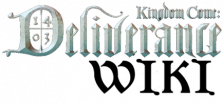Until the 11th century, music and singing were mostly liturgical, though also associated with everyday activities. In the world of religion, there were the Gregorian chants (taking their name from Pope Gregory the Great), or musical forms with Latin singing unaccompanied by instruments, used in the rites of the Roman Catholic Church. The Middle Ages were not averse to singing, but a difficult time for musical instruments, since the Church frowned upon any kind of music other than vocal. For centuries, therefore, the instruments of old continued to be used and no new ones were invented. Instrumental music in its own right gained prominence only in the 14th century, in the ‘ars nova’ or New Art period.
The concept of an original musical work or composition was as yet unknown; music arose mostly from improvisation and musical works were learned off by heart and spread by oral transmission.
Until the 11th century, music and singing were mostly liturgical, though also associated with everyday activities. In the world of religion, there were the Gregorian chants (taking their name from Pope Gregory the Great), or musical forms with Latin singing unaccompanied by instruments, used in the rites of the Roman Catholic Church. The Middle Ages were not averse to singing, but a difficult time for musical instruments, since the Church frowned upon any kind of music other than vocal. For centuries, therefore, the instruments of old continued to be used and no new ones were invented. Instrumental music in its own right gained prominence only in the 14th century, in the ‘ars nova’ or New Art period.
The concept of an original musical work or composition was as yet unknown; music arose mostly from improvisation and musical works were learned off by heart and spread by oral transmission.
